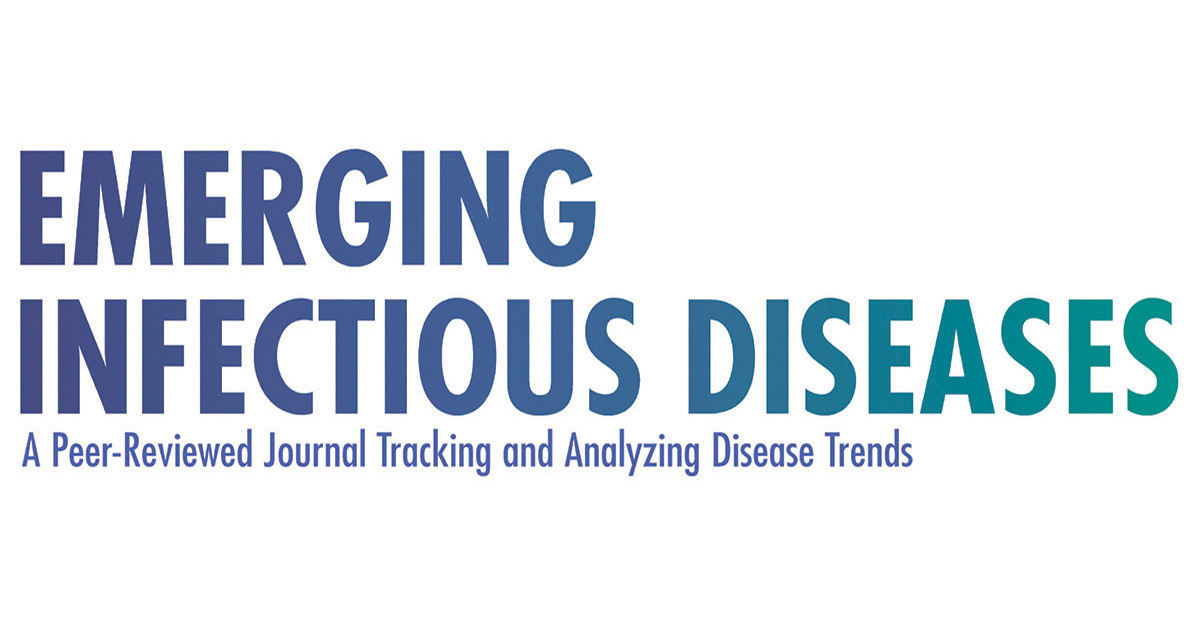Disclaimer: Early release articles are not considered as final versions. Any changes will be reflected in the online version in the month the article is officially released.
Author affiliation: US Food and Drug Administration,…

Disclaimer: Early release articles are not considered as final versions. Any changes will be reflected in the online version in the month the article is officially released.
Author affiliation: US Food and Drug Administration,…

Disclaimer: Early release articles are not considered as final versions. Any changes will be reflected in the online version in the month the article is officially released.
To the Editor: In a recent article, I. Potparić et al….

Statistics Canada’s final major data release of 2025 showed Canadian GDP contracting by 0.3% in October, a tick lower than our pre-release expectation but in line with Statistics Canada’s preliminary estimate. With the advance estimate pointing to a small rebound in November, current tracking leaves GDP growth roughly in line with our base-case forecast of stabilizing conditions in Q4.
While this marks a slowdown from Q3’s jump, domestic demand appears to be on firmer footing. Trade-related uncertainty continues to weigh on export-oriented sectors, but conditions appear to be stabilizing rather than collapsing. October’s data were also influenced by a handful of one-off factors that should unwind, reinforcing the view that October’s softness does not point to a broader deterioration.
Canadian GDP posted a 0.3% pullback in October, mainly driven by goods-producing sectors, while services-providing industry growth also edged lower.
Early indicators, including hours worked rising 0.4% month-over-month, the advance retail sales indicator up 1.2%, and early wholesale sales indicator rising 0.1%, all pointed to a potential recovery in November. On a quarterly basis, Q4 GDP is still tracking at around 0.5% annualized following a 2.6% jump in Q3.
Within goods-producing industries, weaknesses were concentrated in manufacturing, oil and gas (O&G) extraction. Statistics Canada attributed the O&G decline to maintenance activities at oil sands facilities. Supporting activities for mining also dropped by 2.4%, but mining excluding oil and gas posted gains, offsetting some weaknesses.
Trade-exposed sectors reported weaker activities. Manufacturing saw a 1.5% decline in output following a 1.8% increase in September. Transportation and warehousing output (-1.1%) was hit by a nationwide postal service work stoppage early in the month. With the strike shifting to a rotating format on October 11 and the advance GDP estimate for November pointing to growth in that sector, a rebound from strike-related weakness is suggested.
Some service-producing industries were affected by temporary factors. Arts and entertainment received a boost from the Blue Jays’ playoff run, although this support was likely reversed in November. Offsetting stronger activity, Alberta’s teachers’ strike temporarily weighed on education services. Wholesale and retail trade GDP also declined, by 0.9% and 0.6%, respectively.
Statistics Canada’s advance estimate for November points to GDP growth of 0.1%, driven by gains in educational services, construction and transportation and warehousing were partially offset by decreases in mining, quarrying, and oil and gas extraction and manufacturing.

About the Author
Abbey Xu is an economist at RBC. She is a member of the macroeconomic analysis group, focusing on macroeconomic forecasting models and providing timely analysis and updates on economic trends.
Disclaimer
This article is intended as general information only and is not to be relied upon as constituting legal, financial or other professional advice. The reader is solely liable for any use of the information contained in this document and Royal Bank of Canada (“RBC”) nor any of its affiliates nor any of their respective directors, officers, employees or agents shall be held responsible for any direct or indirect damages arising from the use of this document by the reader. A professional advisor should be consulted regarding your specific situation. Information presented is believed to be factual and up-to-date but we do not guarantee its accuracy and it should not be regarded as a complete analysis of the subjects discussed. All expressions of opinion reflect the judgment of the authors as of the date of publication and are subject to change. No endorsement of any third parties or their advice, opinions, information, products or services is expressly given or implied by Royal Bank of Canada or any of its affiliates.
This document may contain forward-looking statements within the meaning of certain securities laws, which are subject to RBC’s caution regarding forward-looking statements. ESG (including climate) metrics, data and other information contained on this website are or may be based on assumptions, estimates and judgements. For cautionary statements relating to the information on this website, refer to the “Caution regarding forward-looking statements” and the “Important notice regarding this document” sections in our latest climate report or sustainability report, available at: https://www.rbc.com/community-social-impact/reporting-performance/index.html. Except as required by law, none of RBC nor any of its affiliates undertake to update any information in this document.

SAVE $25: As of Dec. 23, the Amazon Kindle Paperwhite is on sale for $134.99 instead of $159.99. That’s a savings of 16% or $25 and about $10 shy of its best price ever.

SAVE $140: The Amazon Kindle Scribe (64GB) is on sale at Amazon for $309.99, down from the list price of $419.99. That’s a 31% discount that matches the record low at Amazon.
…

TOKYO — The governor of Niigata on Tuesday formally gave local consent to put two reactors at the Kashiwazaki-Kariwa nuclear power plant in the north-central prefecture back online, clearing a last hurdle toward restarting the plant idled for…

Febrile infection-related epilepsy syndrome (FIRES) is a rare and devastating condition. It is a clinical manifestation rather than a specific diagnosis, characterized by refractory status epilepticus (RSE) occurring in the absence…
Mini Luton Grocery/Luton Groceries
Mohammad Kamaran Mohammad, 24, of Ridgway Road, Luton, was found guilty, following a two-day trial, on nine charges related to Mini Luton Grocery and Luton Groceries between March 2023 and February 2024.
He was convicted following an investigation by Luton Council’s Trading Standards team for selling counterfeit and non-duty paid cigarettes from both shops.
Mr Mohammad was given a 12-month community order, 200 hours of unpaid work and must pay £3,500 costs and a £114 victim surcharge.
Both premises have also been issued with closure orders following an application by the council to the court.
Moldova
Faisal Fazal Abdullah, 40, trading as Moldova in Manchester Street, Luton, pleaded guilty at Luton Magistrates’ Court on 5 December to four counts of selling counterfeit and illicit cigarettes.
The case was adjourned for a probation report and sentencing will take place on 18 February next year.
Magazin Doina
A three-month closure order extension has been obtained against Magazin Doina Romanesc in Wellington Street, Luton.
The council previously obtained a closure on the premises due to persistent sales of illegal cigarettes in September of this year.
However, magistrates heard the landlord was looking to allow the same tenant to remain and continue trading. This, they agreed, would likely lead to the same illegal activity continuing, so the closure order was extended.
Euro Magazin
Euro Magazine Limited, trading as Euro Magazin, in Wellington Street, was issued with three-month closure order by Luton Magistrates’ Court for the persistent sale of illicit tobacco products.
The court heard the director of the company was prosecuted in June 2025, but sales continued. Multiple seizures of illicit tobacco products and a sale of a vape to a 16-year-old test purchaser took place since this date.
Councillor Maria Lovell, portfolio holder for Trading Standards, said: “Yet again our diligent Trading Standards team has successfully tackled businesses who flout the law and sell illegal and dangerous products which could severely harm the health of our residents.
“The health impacts of tobacco are well known and those around vapes are beginning to be understood. We’re determined to keep our town a safe place for everyone by tackling illegal products.”

JOHANNESBURG — The death toll in South Africa ’s latest mass shooting at a pub rose to 10 on Tuesday, while police said they had identified two potential suspects.
Three women and seven men were killed in Sunday’s early-morning assault in the…